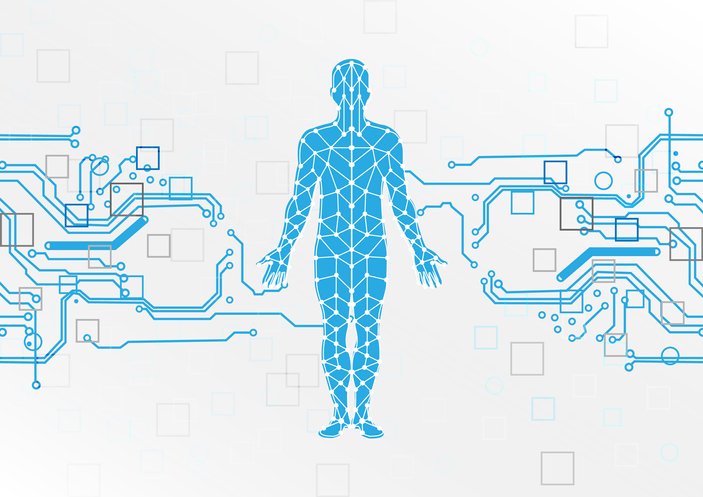
Rare diseases are diseases that affect a small number of people compared to the general population, and the infrequent nature of these conditions can make the process of obtaining a correct diagnosis extremely challenging for healthcare providers, patients and their families. Although the number of cases for each rare disease might be small, their cumulative impact can be staggering, with at least 3.5 percent of the world’s population estimated to be affected by one of the more than 6,000 known rare diseases at any time. For those living with a rare disease, a timely and accurate diagnosis can be important to their health and wellbeing.
Unfortunately, children born with a rare disease are initially misdiagnosed 40 percent of the time, in some cases more than once, and wait an average of nearly five years to receive an accurate diagnosis, even in countries with sophisticated health systems. As a consequence, proper treatment is often delayed and improper disease management can occur.

Behavioral Health, Interoperability and eConsent: Meeting the Demands of CMS Final Rule Compliance
In a webinar on April 16 at 1pm ET, Aneesh Chopra will moderate a discussion with executives from DocuSign, Velatura, and behavioral health providers on eConsent, health information exchange and compliance with the CMS Final Rule on interoperability.
Improving and accelerating the diagnostic process has potential to significantly help some 263 million to 446 million people globally living with a rare disease, over half of which are estimated to be children. It’s critical that stakeholders within the rare disease and technology spaces take action to enable a faster diagnostic path for patients.
Artificial intelligence to revolutionize diagnosis
With unprecedented advancements in technological capabilities being introduced, technology is uniquely positioned to address many barriers to diagnosis for rare disease patients. A contributing factor to the diagnostic odyssey is that rare diseases are infrequent and therefore unfamiliar to most clinicians, who might be unable to link disparate symptoms to a corresponding rare disease for patients. It’s far too common that those living with a rare disease will visit various specialists before obtaining a correct diagnosis, further delaying the process.
One method to address this key issue would be to help doctors link symptoms that may represent a rare disease. Tools leveraging technology such as artificial intelligence (AI) can point physicians towards a potential diagnosis faster than conventional methods.
Multifactorial machine learning to recognize symptom patterns
One tool to address the diagnostic odyssey is a digital platform that is being developed to help diagnose a patient’s disease by analyzing their symptoms and, when available, genomic data. Results to date have been promising.

A Deep-dive Into Specialty Pharma
A specialty drug is a class of prescription medications used to treat complex, chronic or rare medical conditions. Although this classification was originally intended to define the treatment of rare, also termed “orphan” diseases, affecting fewer than 200,000 people in the US, more recently, specialty drugs have emerged as the cornerstone of treatment for chronic and complex diseases such as cancer, autoimmune conditions, diabetes, hepatitis C, and HIV/AIDS.
The idea for this tool started with Julián Isla, a technologist and father of a child with Dravet Syndrome, a severe form of epilepsy affecting fewer than one in 40,000 infants. After a long wait for answers, Isla’s son was initially misdiagnosed, resulting in serious health consequences.
Isla launched a health tech nonprofit startup, Foundation 29, to spearhead development of the tool called Dx29, with support from the Global Commission to End the Diagnostic Odyssey for Children with a Rare Disease, a multi-sector initiative to harness the power of technology to accelerate the time to diagnose a rare disease.
Patient data sharing
However, tools like these – which rely on information from a relatively small number of patients – will fail to flourish without a coordinated, global approach to sharing patient data across borders to increase the volume of data for analysis. Large-scale collaborations that help provide anonymous patient data in a secure way are the next frontier – and patients will be central to future progress.
Encouragingly, the World Health Organization’s global strategy for digital health commits to supporting the seamless and secure exchange of health data across the health community. A surge in cross-border data sharing among infectious disease experts and researchers studying Covid-19 should also help pave the way toward greater sharing of health data within other disease areas, including rare diseases.
All patients and physicians searching for a diagnosis – regardless of where they live and their circumstances – deserve a timely, accurate diagnosis. Embracing innovative technology could contribute to this reality.
Photo: mrspopman, Getty Images
Yann Le Cam is Chief Executive Officer of EURORDIS-Rare Diseases Europe, a non-profit alliance of 956 rare disease patient organizations from 73 countries working to improve the lives of the 30 million people living with a rare disease in Europe.
Gregory Moore, MD, PhD, is an engineer, neuroradiologist, and the Corporate Vice President of Microsoft Health.
Wolfram Nothaft, MD, is a physician and the Chief Medical Officer at Takeda. Le Cam, Moore and Nothaft are co-chairs of the Global Commission to End the Diagnostic Odyssey for Children with a Rare Disease, which supports the efforts of Foundation 29.












